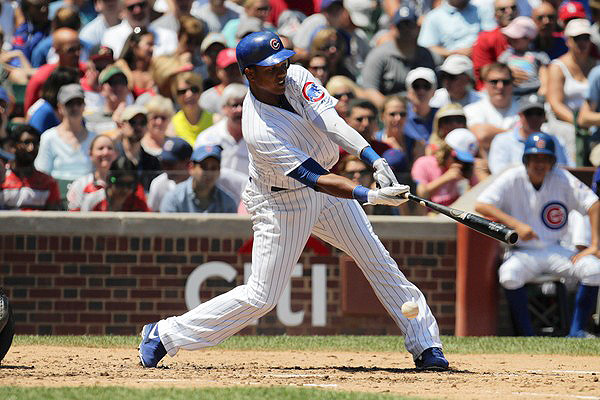
In giving thanks that the Cubs are not the Astros, I mentioned in passing that the Cubs draw fewer walks (and give up more walks) than any team in baseball. It's true, but it doesn't emphasize quite how impatient the 2012 Cubs are. As a team, they walk 6.5 percent of the time. That ties them for the eighth-worst walk rate in the past 50 years, tied with nine other teams, including the 77-85 Cubs of 1988. The MLB average for teams this year is 8.08 percent.
(As far as strikeouts go, they're merely 18th in the past 50 years in strikeout rate, though that does reveal something interesting: all the teams as bad or worse than the 2012 Cubs in strikeout rate have played since 2001. In the 60 team-seasons with the highest strikeout rates, only two come before 2000: the 1996 Tigers, who finished 53-109, and the 1968 Mets, the last bad Mets team before the Miracle Mets.)
It follows that they're not getting on base very often: the 2012 Cubs have the third-lowest on-base percentage of the past 30 years. The Mariners of 2010-2012 account for three of the bottom five, but there's evidence suggesting that they suffer dearly for playing in Safeco Field, especially this season, when it's "just destroying offense this year in a way that it never has before." Besides those Mariners, the other bottom-five team is the 1989 Braves, one of a series of awful Braves teams just before they became the most consistently good team in the National League.
So this is a bad, bad offense, or at least a deeply flawed one. And it might get worse. Consider this, and keep in mind that the average walk rate for qualified players this year is 8.59 percent:
* Starlin Castro, Darwin Barney, and Alfonso Soriano are all having decent seasons, and will remain in the lineup. This season they are walking 3.9 percent, 4.9 percent, and 5.9 percent of the time, respectively. Yes: the Cubs' second- and third-best players by WAR this season walk less often than Alfonso Soriano, which is something of an achievement.
* Geovany Soto (9.6 percent) is essentially being replaced by Wellington Castillo (5.7 percent so far, though he was better in Triple-A). His backup/platoon-mate, Steve Clevenger, has walked five times in 145 plate apperances.
* Anthony Rizzo is walking 4.8 percent of the time. He showed a better eye with the Padres, but with the Cubs' Triple-A affiliate he was walking 8.1 percent of the time.
* Josh Vitters just got called up, where he may displace Luis Valbuena (good eye) in the position that Ian Stewart manned for awhile (very patient, just unable to hit). Vitters? "I don't think you can really walk, especially at a high level in the minor leagues, unless you're at least feared to some extent by the other teams."
Bryan LaHair and David DeJesus are both patient, and Brett Jackson has shown the ability to be. Beyond that, it's a free-swinging team.
The Cubs are also giving more free passes than any team in baseball, 3.71 per nine innings. This, however, is nowhere near record highs. No team in the past four years has walked more than four batters per nine innings, and the Cubs are more than a walk per nine below the record for the past 30 years: also the 1996 Tigers* at 4.93 per nine innnings. Pitchers, in the past decade, seem to have gotten much more controlled, as high-walk seasons are down and high-strikeout seasons are up.
* Since World War II, no team has had a higher staff ERA (6.38) or given up more home runs per nine innings (1.51) than the 1996 Tigers, and their BB/9 is sixth in that period. I doubt we will see the likes of them again, one of the most weirdly assembled baseball teams in history.
Photograph: Chicago Tribune


